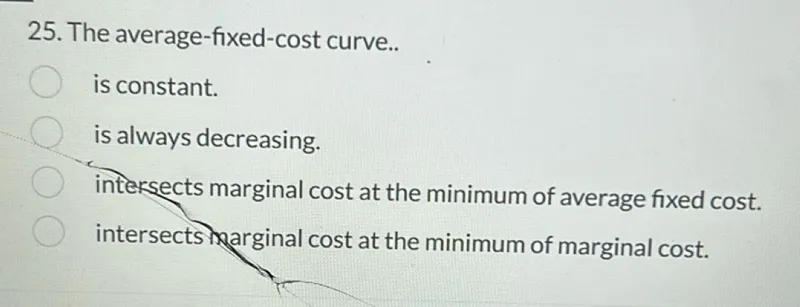Questions: 25. The average-fixed-cost curve.. is constant. is always decreasing. intersects marginal cost at the minimum of average fixed cost. intersects marginal cost at the minimum of marginal cost.

Transcript text: 25. The average-fixed-cost curve..
is constant.
is always decreasing.
intersects marginal cost at the minimum of average fixed cost.
intersects marginal cost at the minimum of marginal cost.





